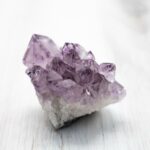Are you ready to dive into the fascinating world of aluminum chloride? In this comprehensive guide, we will unravel the mysteries surrounding this versatile inorganic compound and explore its intriguing properties. From its mesmerizing chemical structure to its wide range of applications, we will delve deep into the realm of aluminum chloride and uncover its secrets. Whether you are a seasoned professional in the field of chemical engineering or simply an enthusiast curious to learn more, this article is your ultimate go-to resource for all things aluminum chloride. So buckle up, and let’s embark on this captivating journey through the realm of aluminum chloride’s properties.

Aluminum Chloride Properties
Aluminum chloride (AlCl3) is a versatile compound with unique properties that make it an essential component in various chemical applications. In this comprehensive guide, we will explore the properties of aluminum chloride, shedding light on its intriguing characteristics and practical applications.
1. Anhydrous Aluminum Chloride: A Powerful Dehydrating Agent
One of aluminum chloride’s notable properties is its role as a Lewis acid and a powerful dehydrating agent. In its anhydrous form, it has the ability to remove water molecules from organic compounds, allowing for the synthesis of new materials. Its dehydrating prowess is particularly useful in reactions where water can interfere with the desired chemical transformation.
Aluminum chloride’s anhydrous form exhibits its true power as a dehydrating agent, enabling efficient synthesis processes and minimizing unwanted side reactions.
2. Sublimation: Transitioning from Solid to Gas
Aluminum chloride displays an interesting phenomenon called sublimation, which is the transition from a solid to a gas state without passing through a liquid phase. At around 180°C, aluminum chloride sublimes, releasing a gas that can be harnessed for specific applications. This unique property allows for precise control and manipulation of the compound, opening up new avenues for experimentation and synthesis.
Sublimation gives aluminum chloride an advantage in the lab, providing flexibility in its uses and applications, making it a valuable compound for researchers and chemists alike.
3. Melting Point and Color
Aluminum chloride has a relatively low melting point. At temperatures above its melting point, it can exist as a liquid, facilitating various chemical reactions. The melting point of aluminum chloride is dependent on its hydration state, with hydrated forms having higher melting points. Furthermore, aluminum chloride itself is usually white in color, but it is often contaminated with iron trichloride, giving it a yellowish appearance.
The melting point of aluminum chloride determines its state during chemical processes, while its color can be indicative of impurities, affecting its overall properties and applications.
4. Aluminum Chloride as a Lewis Base and Catalyst
Aside from its Lewis acid properties, aluminum chloride can also act as a Lewis base in certain chemical reactions. This dual nature enhances its versatility and applicability in catalytic processes. One prominent application is its role as a catalyst in Friedel-Crafts reactions, specifically in the alkylation and acylation of arenes. The presence of aluminum chloride as a catalyst enhances reaction rates and selectivity, leading to more efficient and controlled chemical transformations.
Aluminum chloride’s ability to function as a Lewis base broadens its applications, especially in catalytic processes, where it plays a crucial role in enhancing reaction efficiency and control.
5. Synthesis of Aluminum Chloride
Aluminum chloride can be synthesized through the reaction of aluminum metal with either chlorine gas or hydrogen chloride. These reactions yield different forms of aluminum chloride, depending on the conditions and reactants used. It is essential to choose the appropriate synthesis method to obtain the desired form and purity of aluminum chloride.
The synthesis of aluminum chloride requires careful consideration of reactants and reaction conditions to ensure the desired form and quality of the compound are achieved.
6. Safety Considerations
While aluminum chloride is a valuable compound, it should be handled with care due to its reactivity and potential hazards. Anhydrous aluminum chloride reacts vigorously with bases and can cause irritation to the eyes, skin, and respiratory system. Proper protective measures and adherence to safety protocols are crucial when working with aluminum chloride to ensure the well-being of laboratory personnel.
Safety should always be a top priority when handling aluminum chloride to prevent any harm or accidents in the laboratory.
In conclusion, aluminum chloride possesses unique properties that contribute to its wide range of applications in the field of chemistry. Its role as a Lewis acid and dehydrating agent, along with its sublimation capabilities, make it a valuable tool for synthetic processes. Its ability to act as both a Lewis base and a catalyst further expands its usefulness in various reactions. However, caution must be exercised when handling aluminum chloride to ensure the safety of those working with it.
So, next time you encounter aluminum chloride, remember its properties and unleash its potential in your chemical endeavors.
“Aluminum chloride’s diverse properties make it a versatile compound, capable of enhancing chemical reactions and enabling novel synthetic routes.”
Aluminum chloride is a versatile compound with a multitude of interesting facts that will surely capture your attention. Did you know that aluminum chloride is commonly used in antiperspirants to help control sweat? Whether you’re curious about its important role in industrial processes or its potential health benefits, delve into the realm of aluminum chloride. Discover the intriguing properties and applications of this compound by clicking on this link: interesting facts about aluminum chloride. Unveil the lesser-known secrets of aluminum chloride and expand your knowledge on this fascinating subject.

FAQ
Question 1
What is the chemical formula of aluminum chloride?
Answer 1
The chemical formula of aluminum chloride is AlCl3.
Question 2
What type of acid is aluminum chloride?
Answer 2
Aluminum chloride is a Lewis acid.
Question 3
What is the color of aluminum chloride?
Answer 3
Aluminum chloride is usually white in color but can be contaminated with iron trichloride, giving it a yellow color.
Question 4
How is aluminum chloride used in chemical applications?
Answer 4
Aluminum chloride is commonly used as a catalyst in Friedel-Crafts reactions for alkylation and acylation of arenes. It is also used as a Lewis base in various chemical applications.
Question 5
How is anhydrous aluminum chloride manufactured?
Answer 5
Anhydrous aluminum chloride is manufactured by the reaction of aluminum metal with chlorine or hydrogen chloride.
















